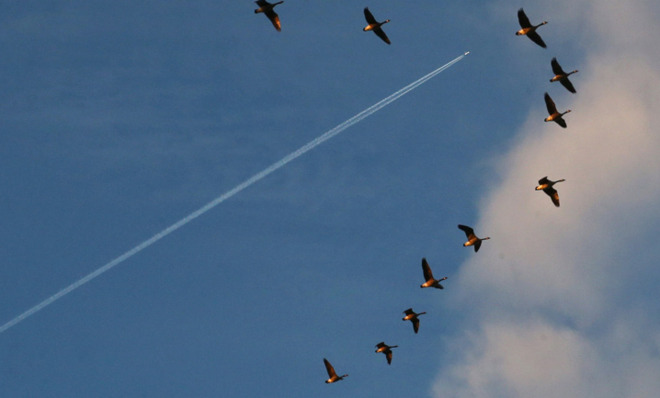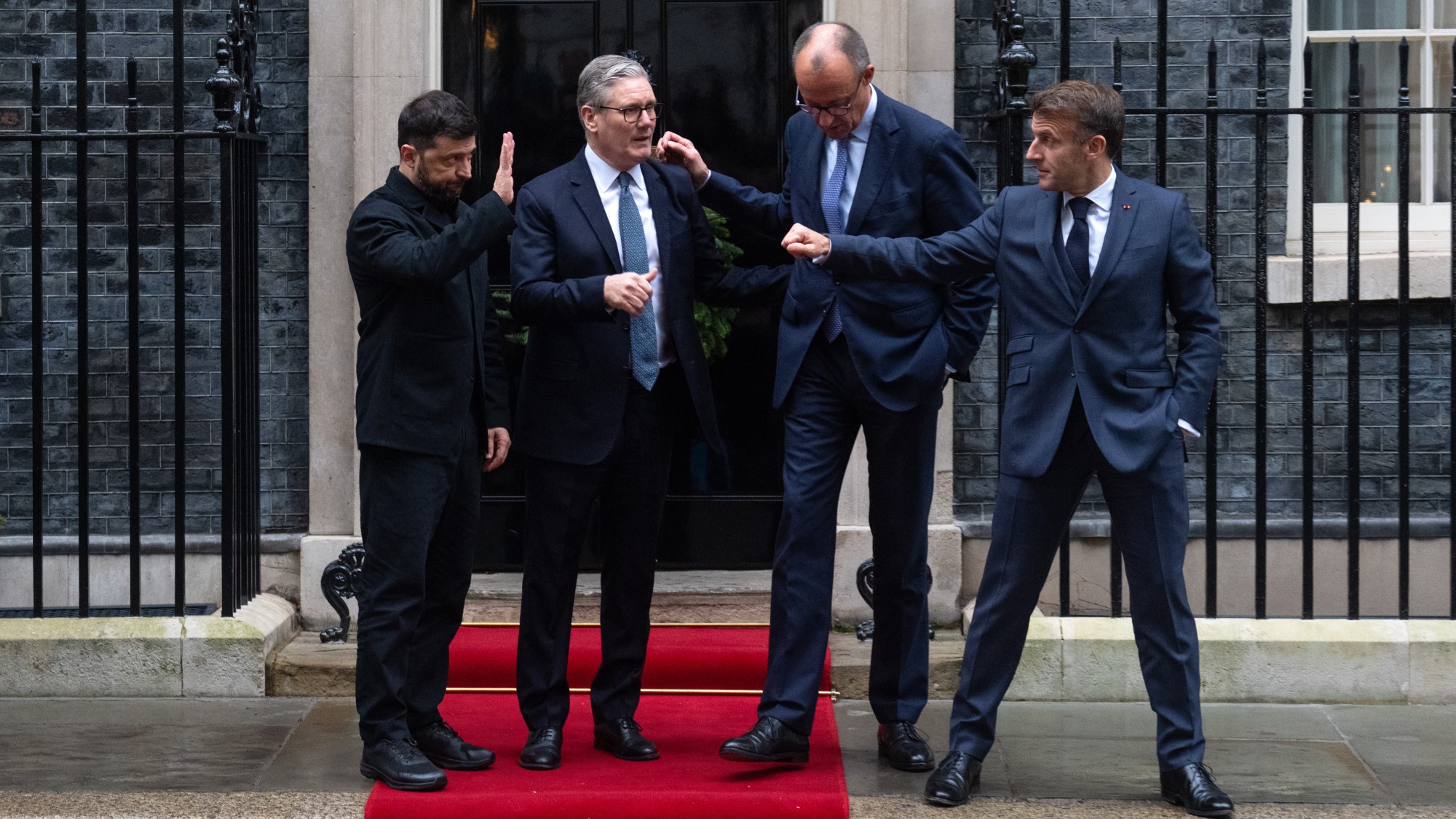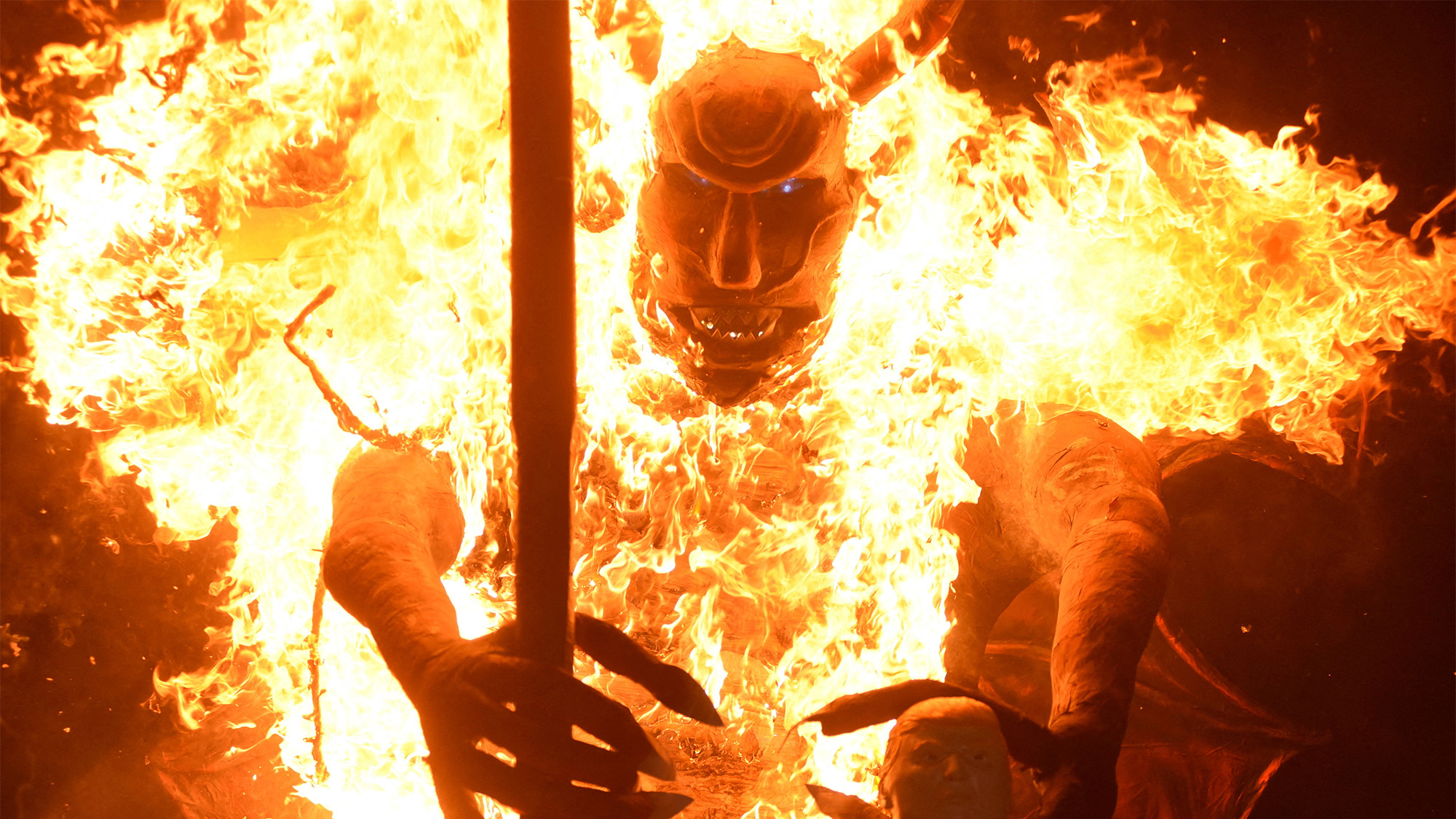This is why birds fly in a V
Humans could learn a thing or two from our feathered friends

Why do migratory birds like ducks and geese fly in the shape of a V? Why not an I? Or how about an amoeba-esque cluster like humans do in tour groups?
It's an interesting phenomenon. And understanding it could help us out with things like designing more efficient aircraft.
Previous studies have concluded that the V may have something to do with the flock's visual axes. As Scientific American suggested in 2007, the V may help them eliminate blind spots and "maintain optimal visual positioning." Nobody wants to slam into a 747.
The Week
Escape your echo chamber. Get the facts behind the news, plus analysis from multiple perspectives.

Sign up for The Week's Free Newsletters
From our morning news briefing to a weekly Good News Newsletter, get the best of The Week delivered directly to your inbox.
From our morning news briefing to a weekly Good News Newsletter, get the best of The Week delivered directly to your inbox.
But a new study, published in this week's Nature, appears to have discovered another, previously unrecognized reason birds instinctively arrange themselves in a V formation. And it has to do with aerodynamics and energy conservation.
For their research, scientists equipped a flock of ibises with lightweight GPS units in an attempt to discern the advantages of a V formation. Here's what they discovered:
When the researchers analyzed the data from 14 young ibises flying in a V, they found that each ibis placed itself an average of four feet behind the bird in front of it and at an average angle of 45 degrees. That's just the configuration needed for individual birds to catch the rising air generated by the flapping of the bird in front of it. By capturing this rising air, or "upwash," the bird stays aloft more efficiently.
But the birds do more to save their strength than simply choosing the right spot. Measurements of the ibises' flaps showed the birds time their wing beats so precisely that they continually catch the upwash left behind by the moving wings of the guy or gal ahead. That means a bird regulates its stroke so its own wingtips trace the same path in the sky as the bird in front. If a bird happens to get a little closer to or farther from the bird it's following, it instantly adjusts its wing beat accordingly. [USA Today]
Birds truly are the wind beneath one another's wings.
A free daily email with the biggest news stories of the day – and the best features from TheWeek.com
-
 Will there be peace before Christmas in Ukraine?
Will there be peace before Christmas in Ukraine?Today's Big Question Discussions over the weekend could see a unified set of proposals from EU, UK and US to present to Moscow
-
 Quiz of The Week: 6 – 12 December
Quiz of The Week: 6 – 12 DecemberQuiz Have you been paying attention to The Week’s news?
-
 The week’s best photos
The week’s best photosIn Pictures A man's best friend, the elephants in the room, and more